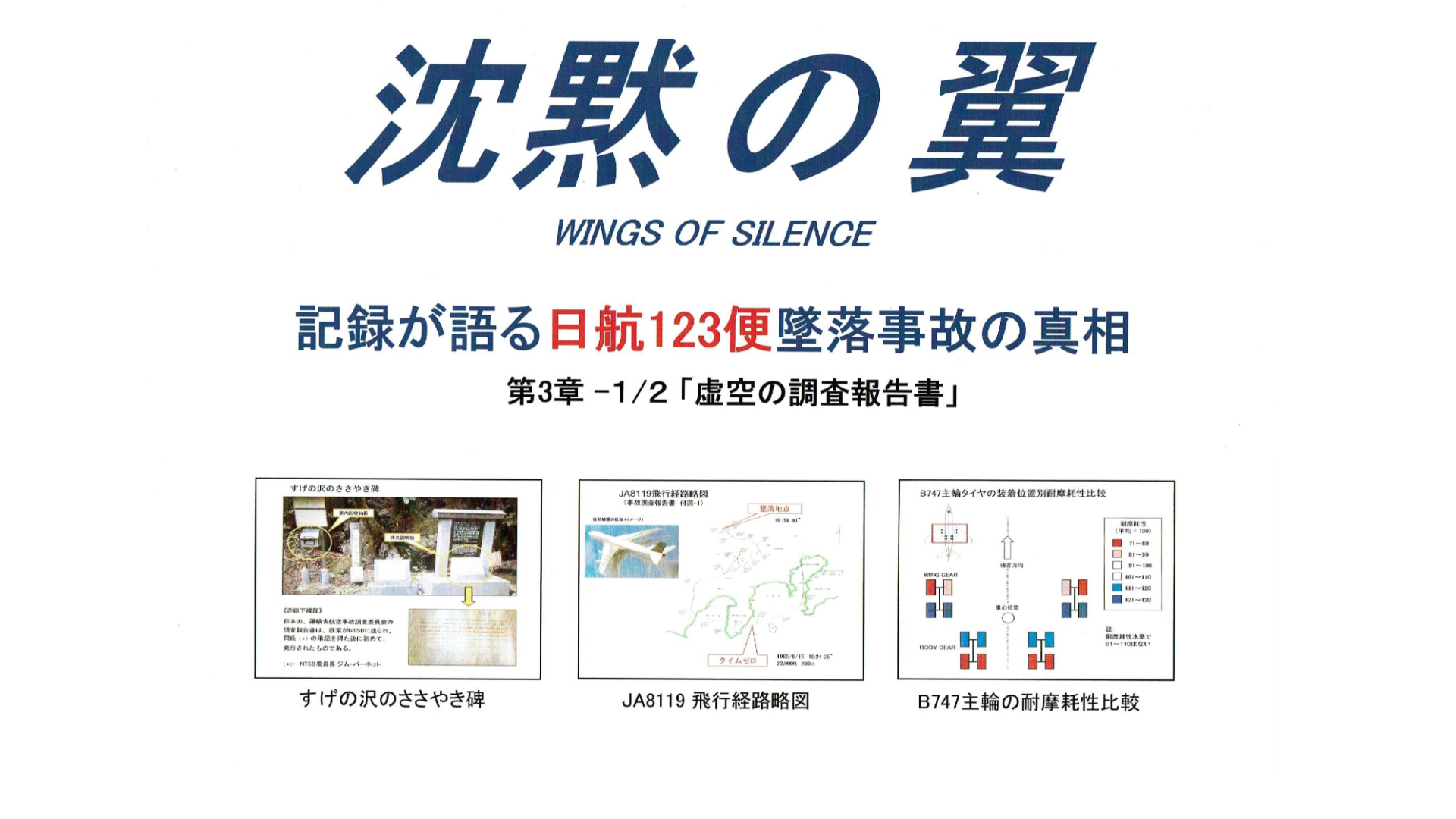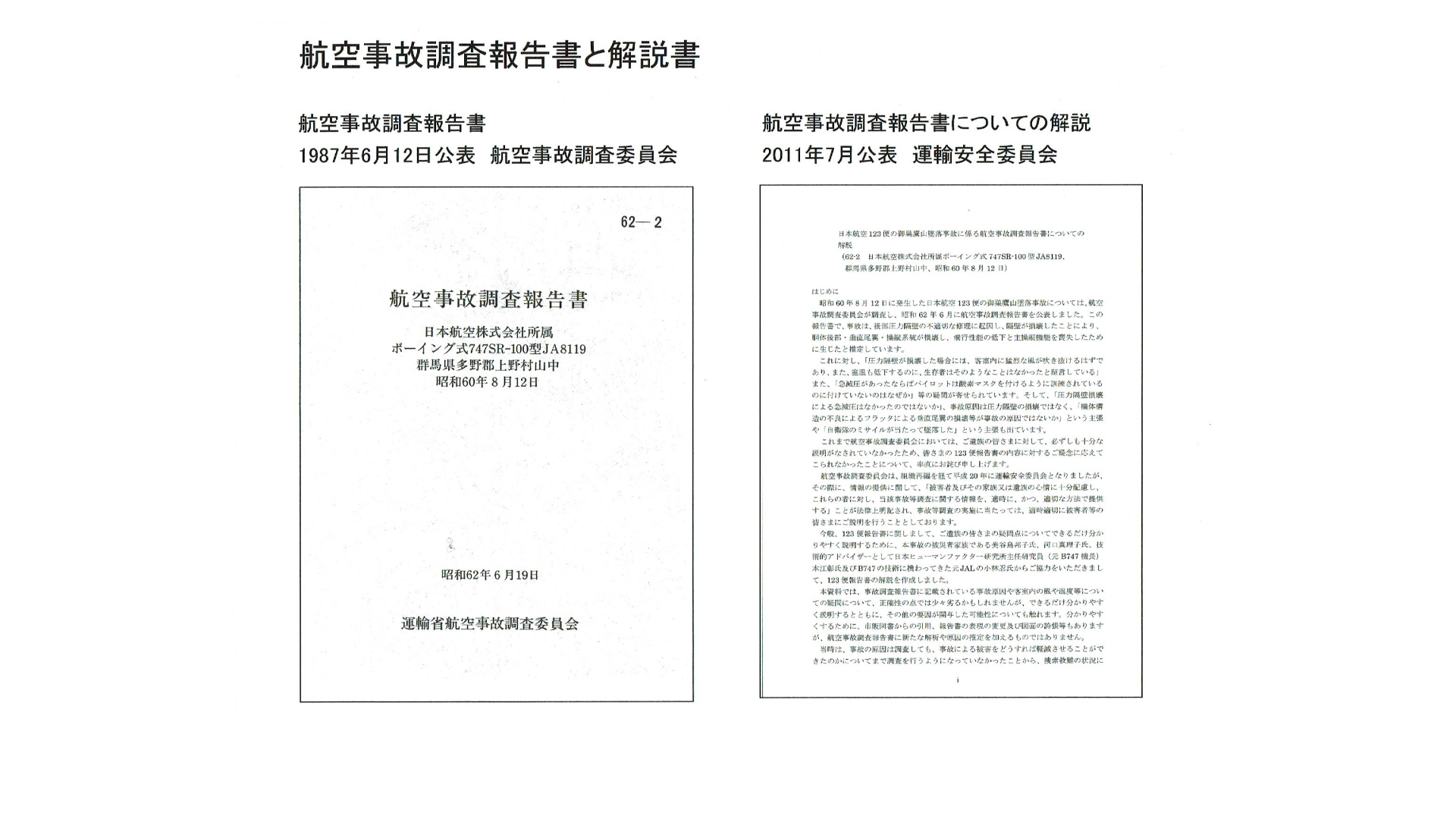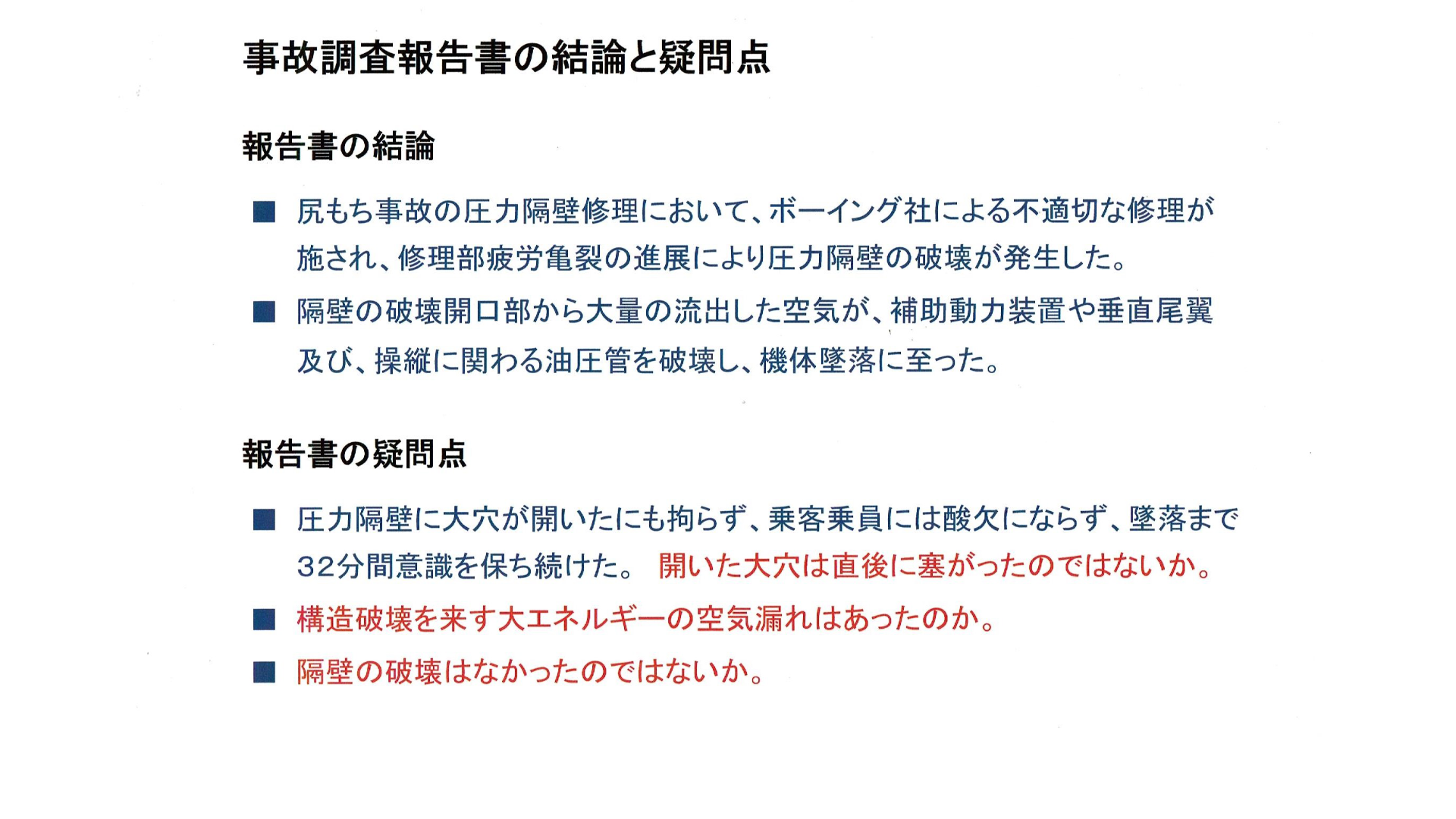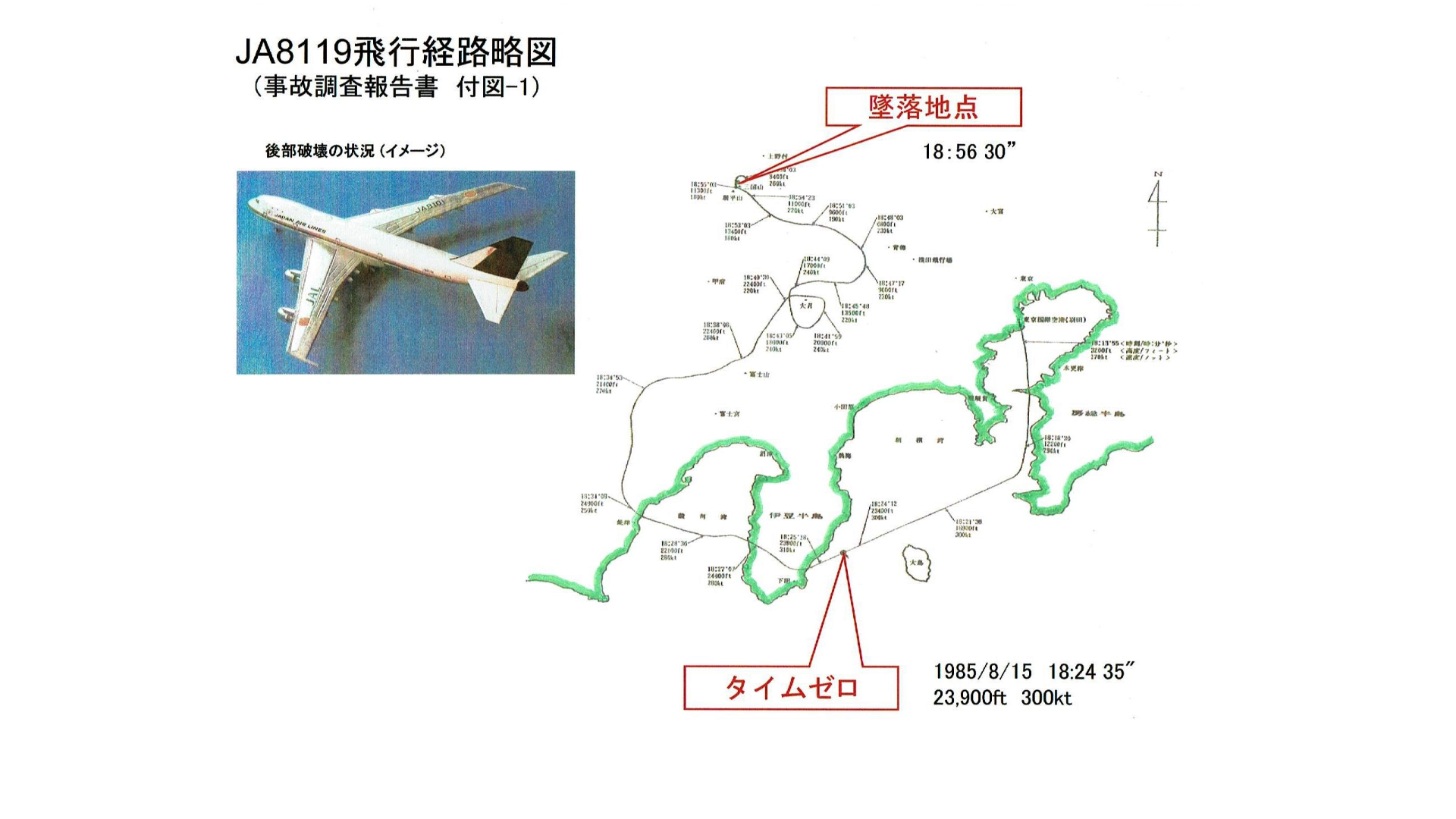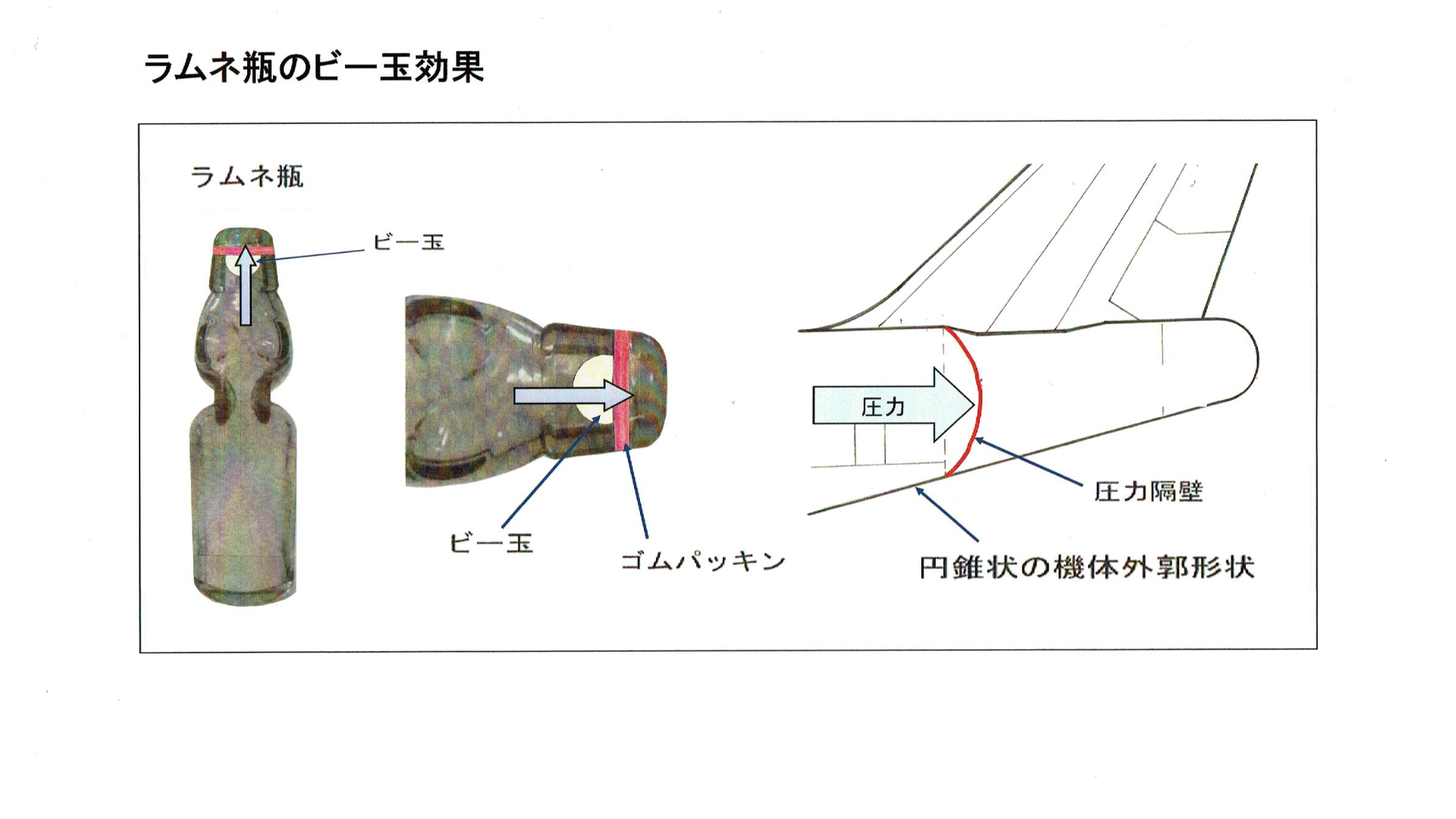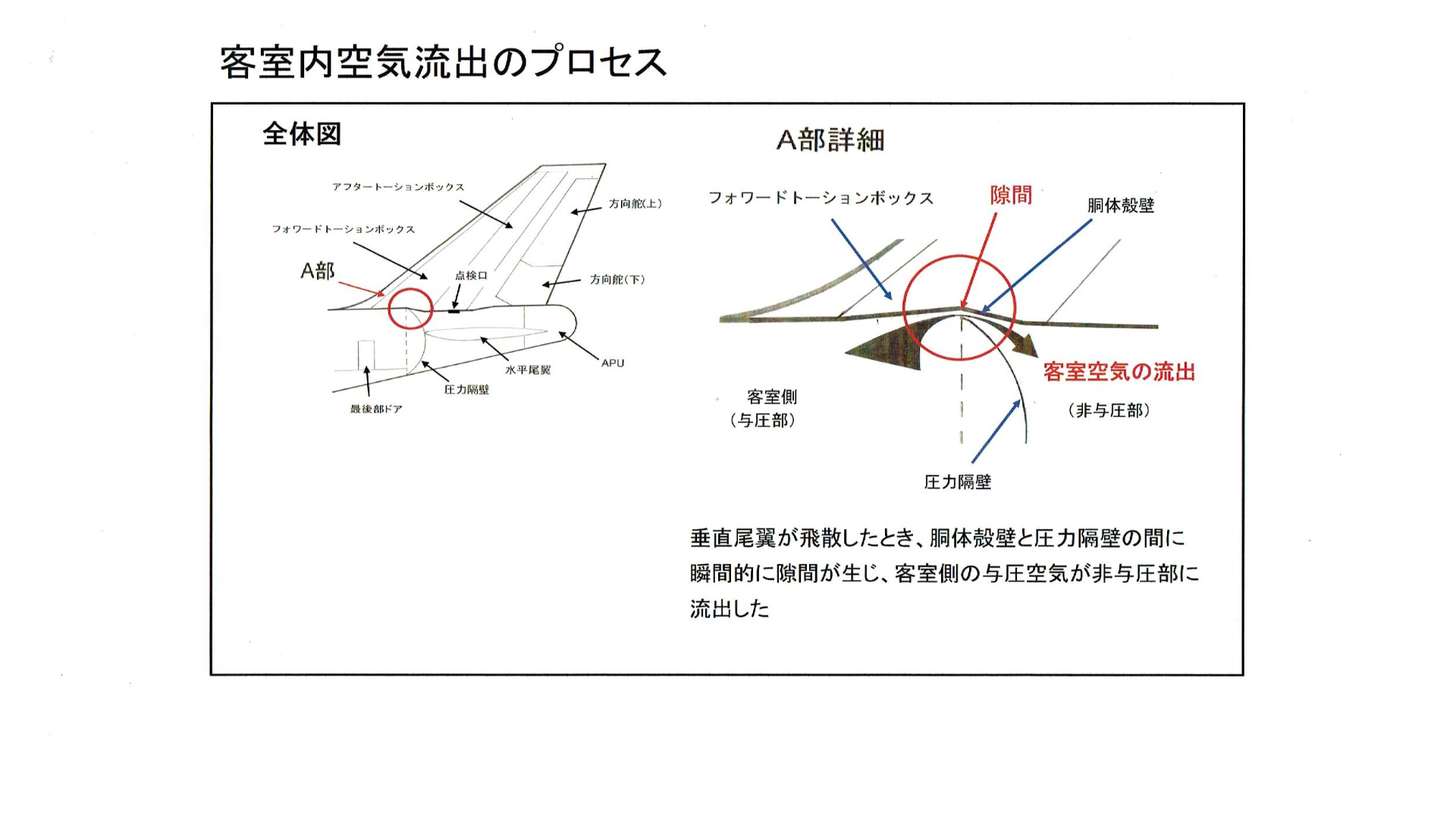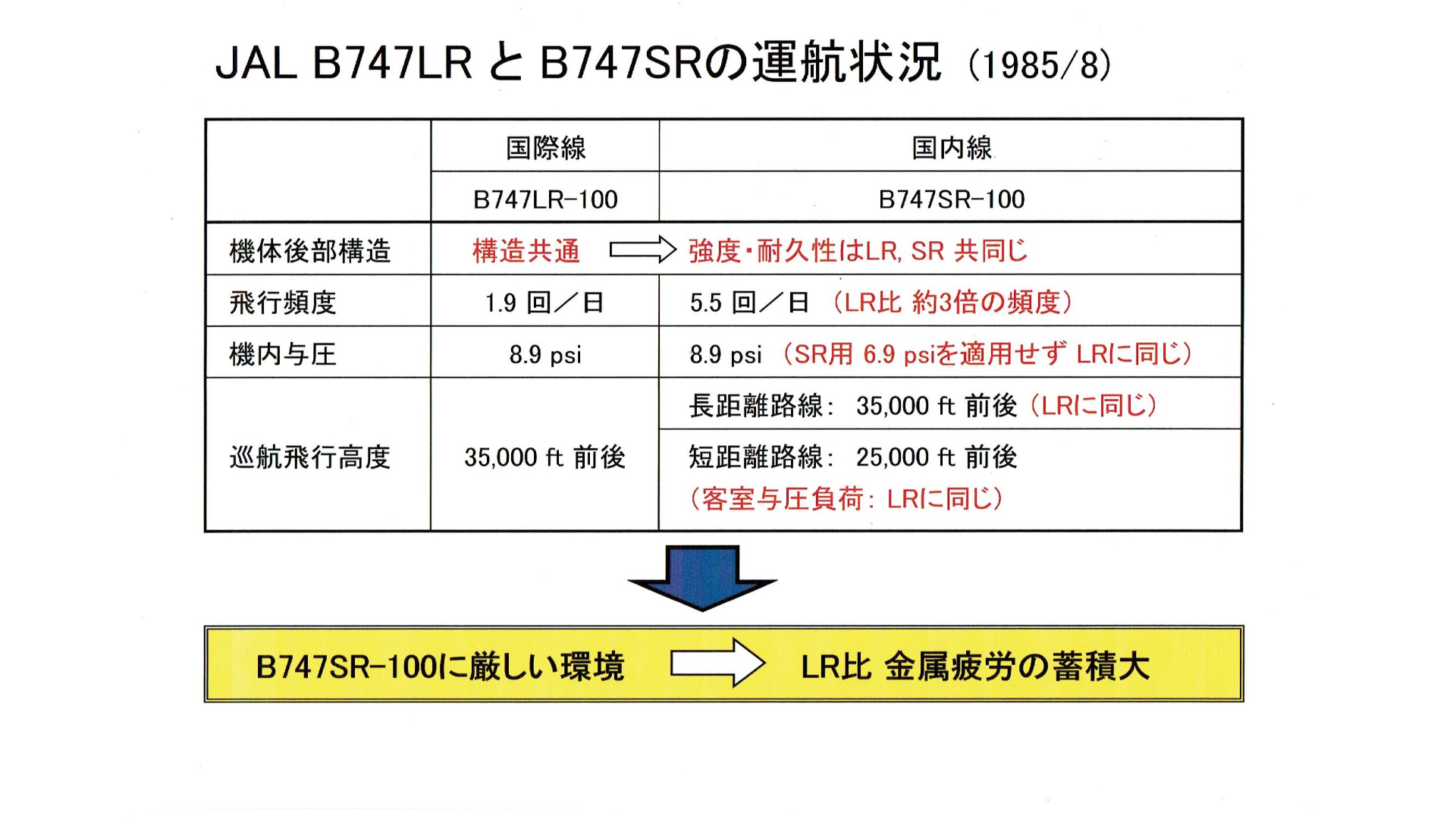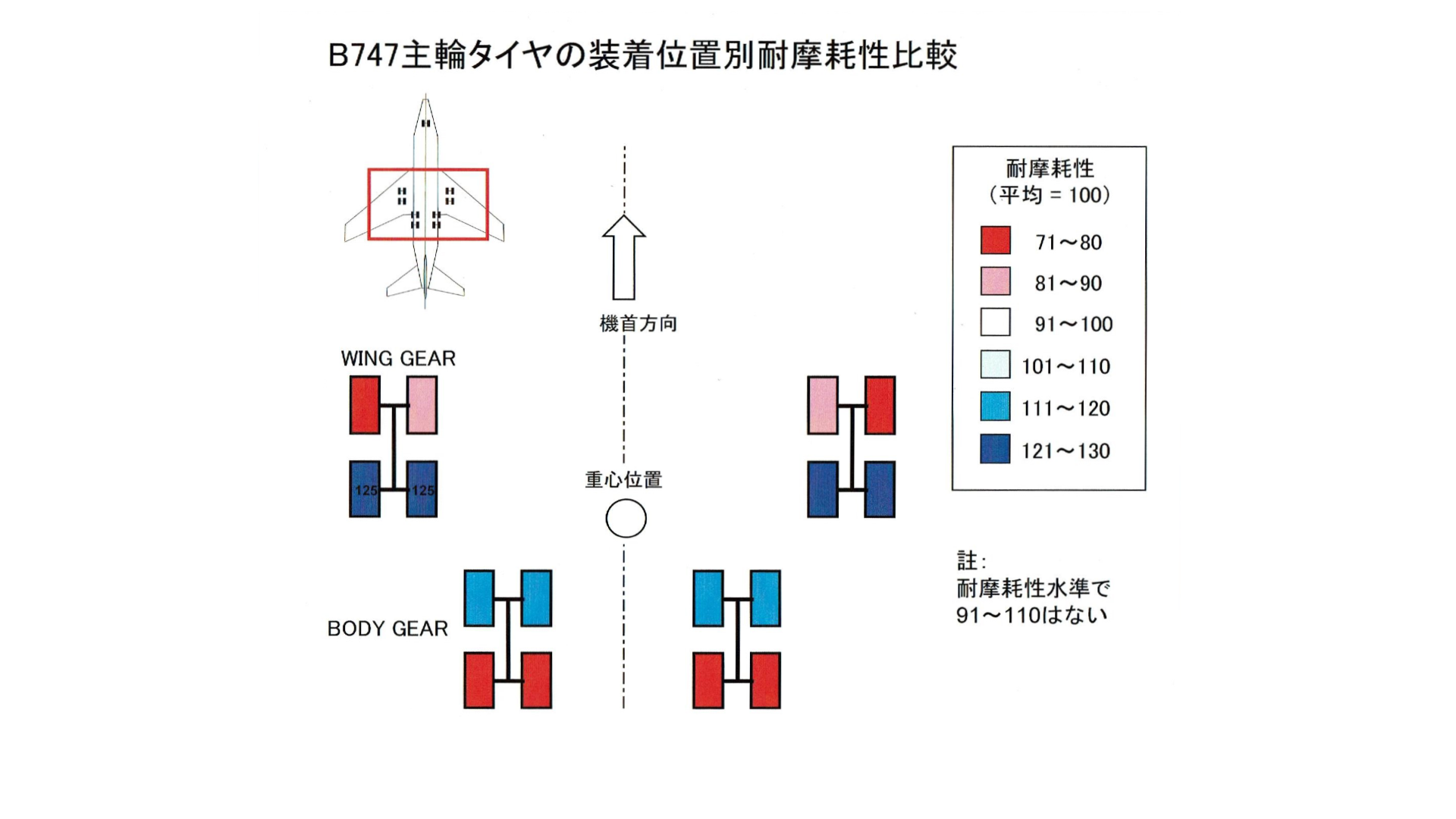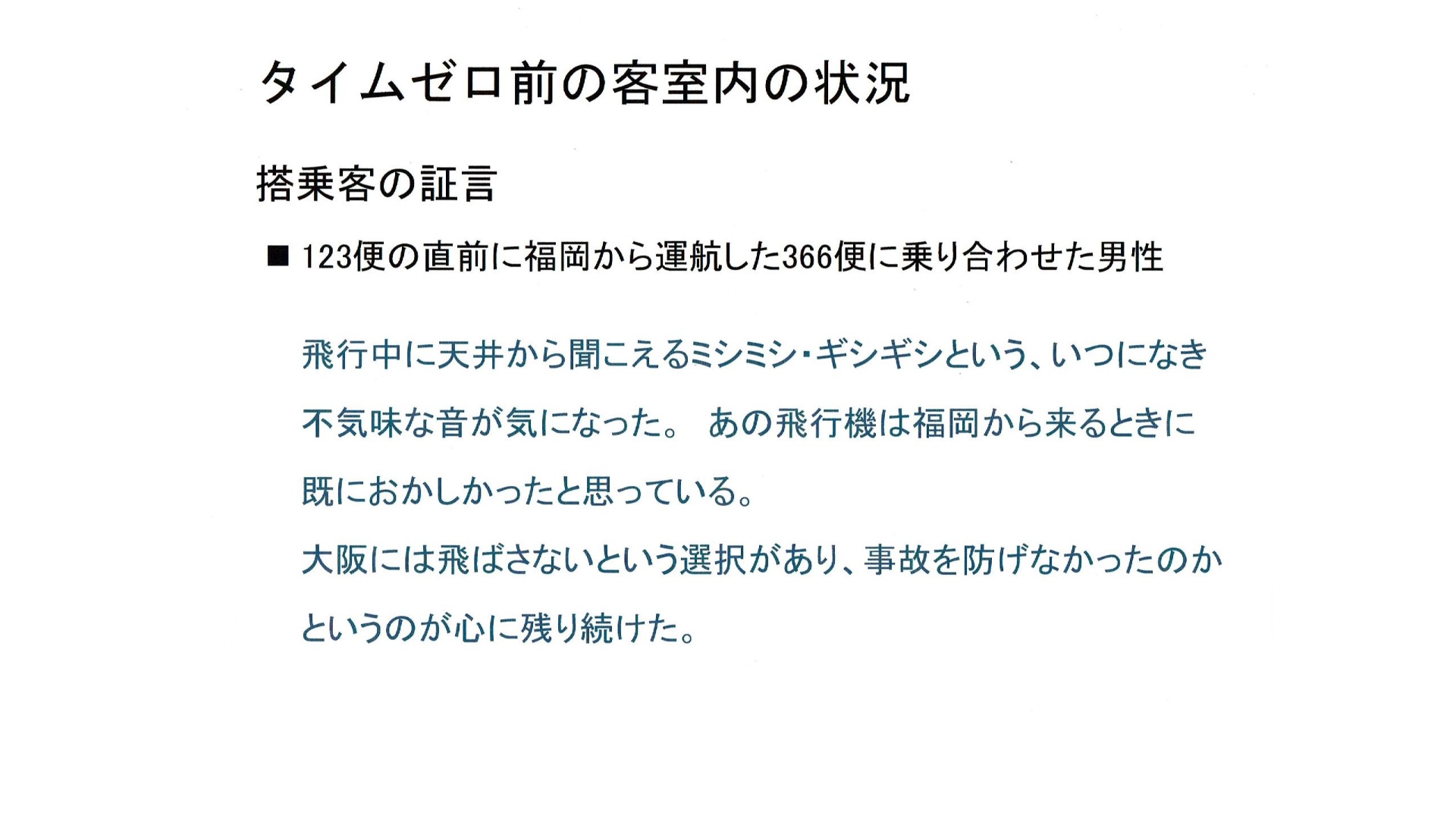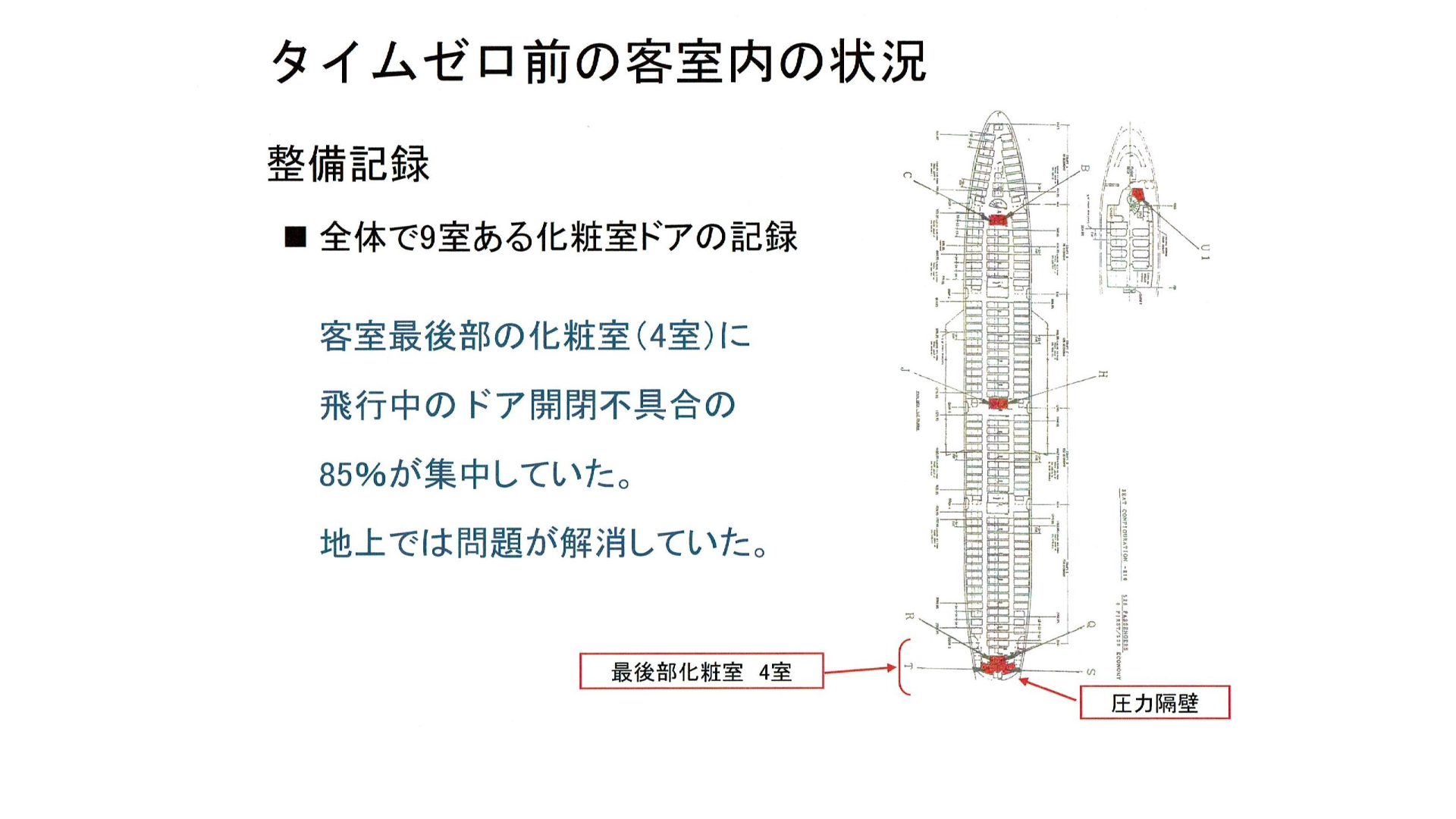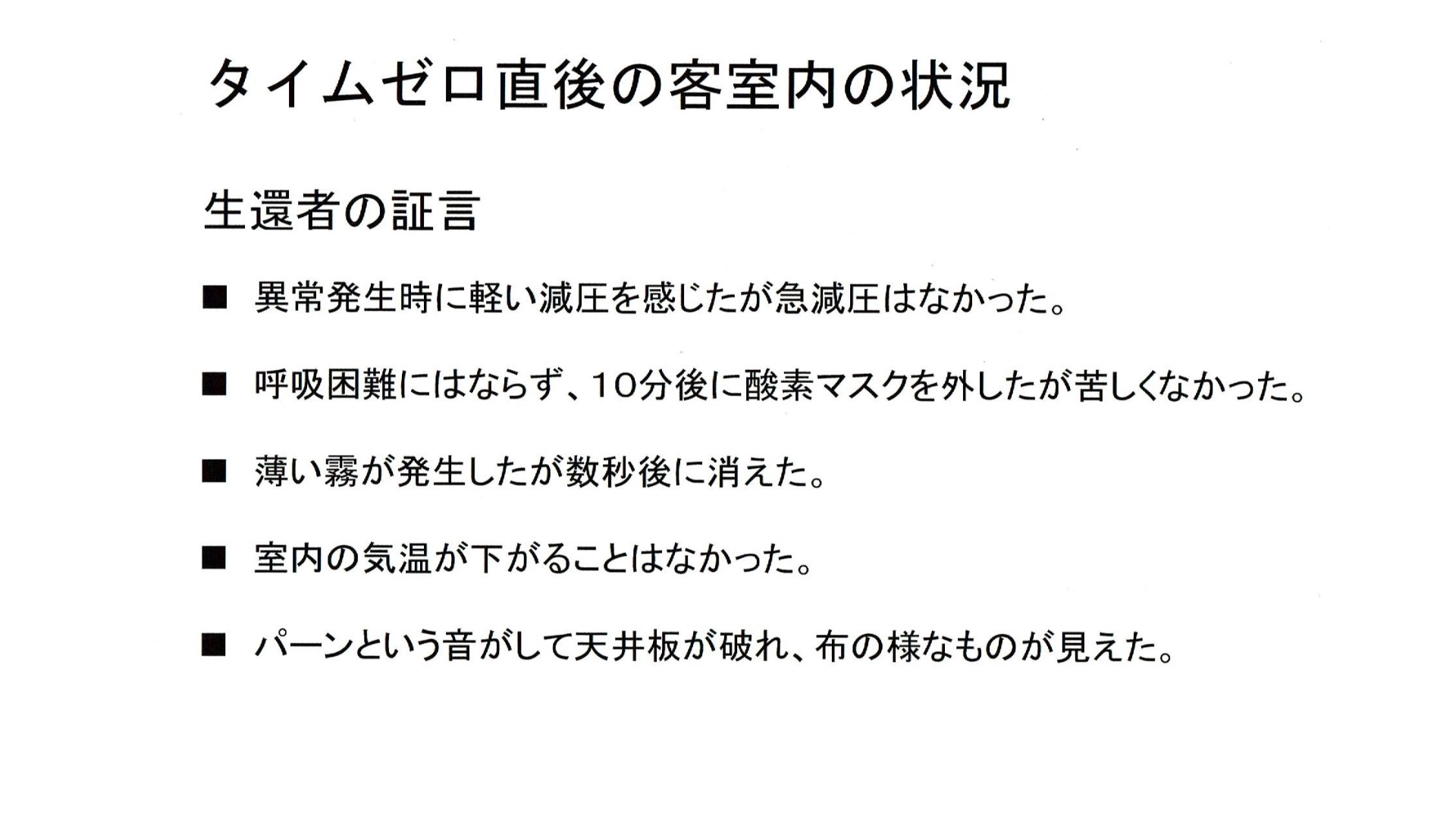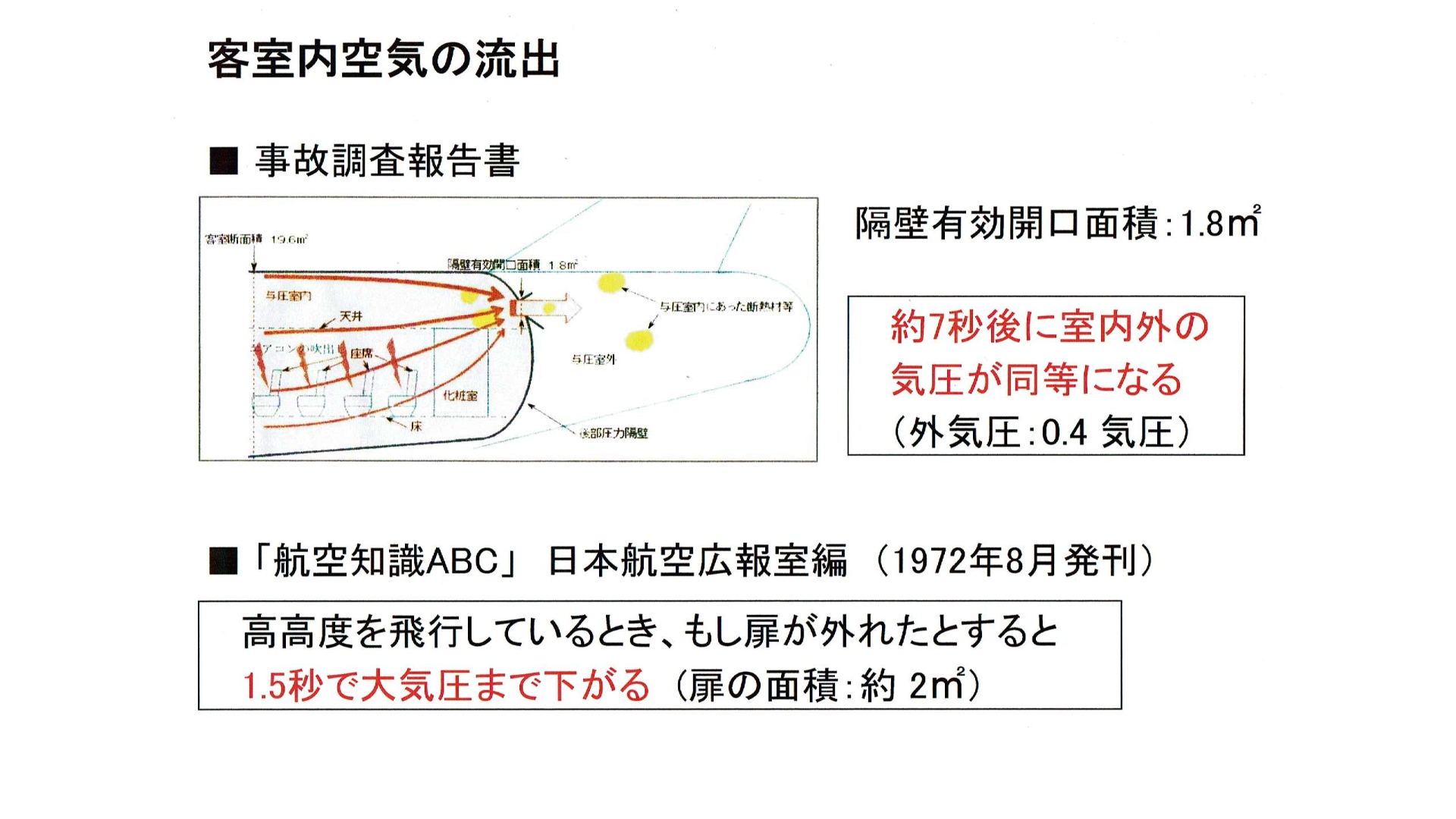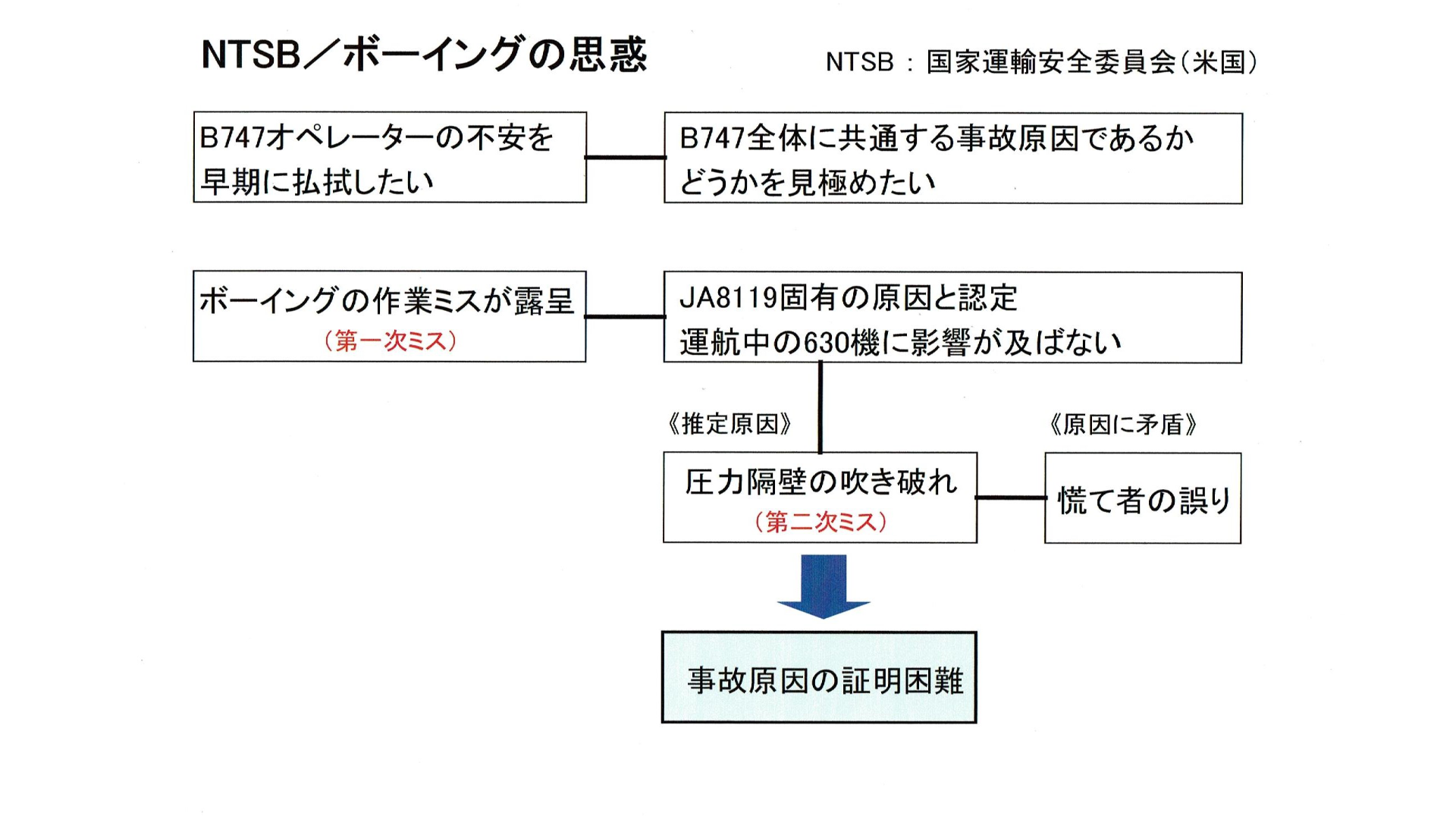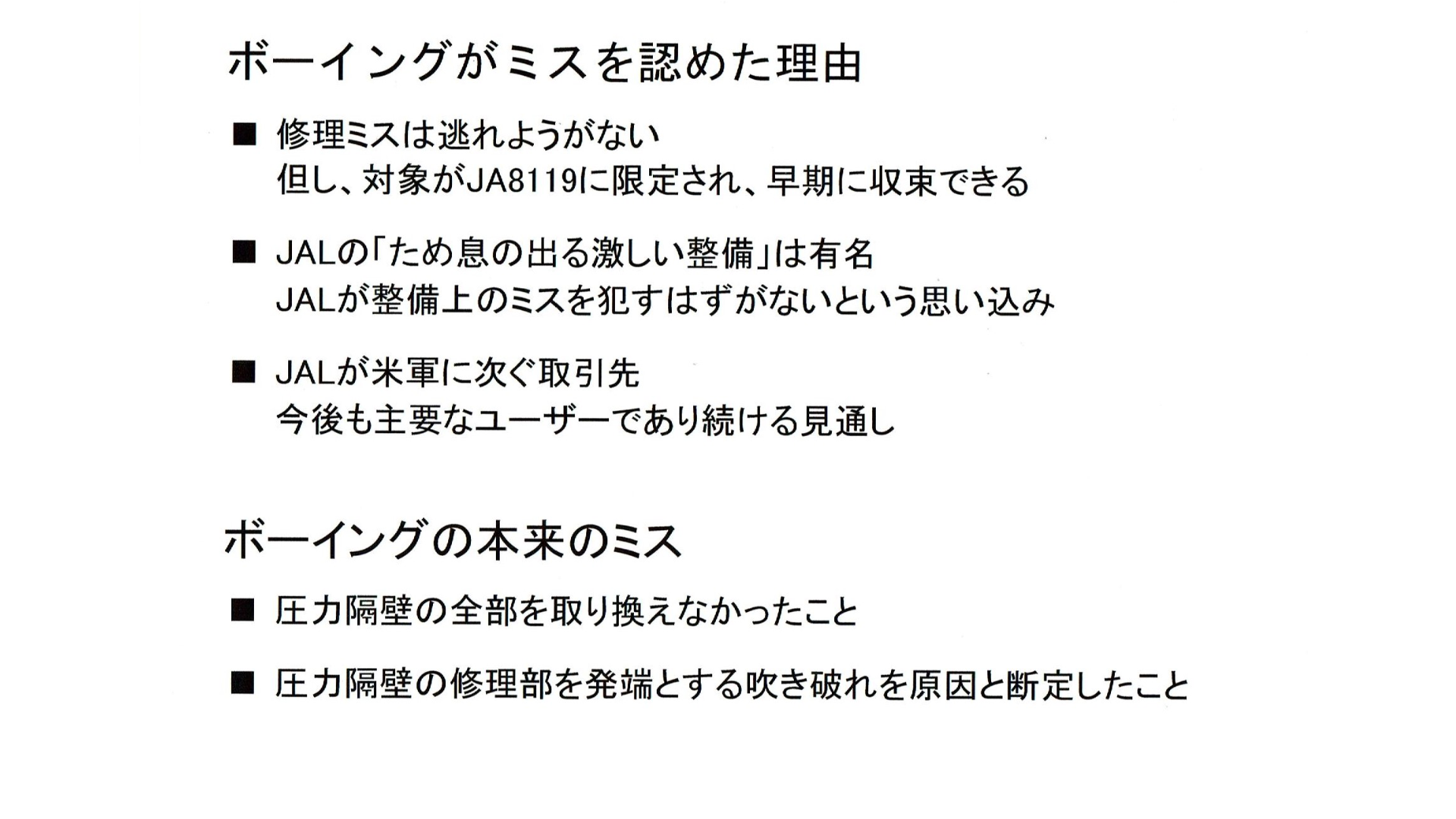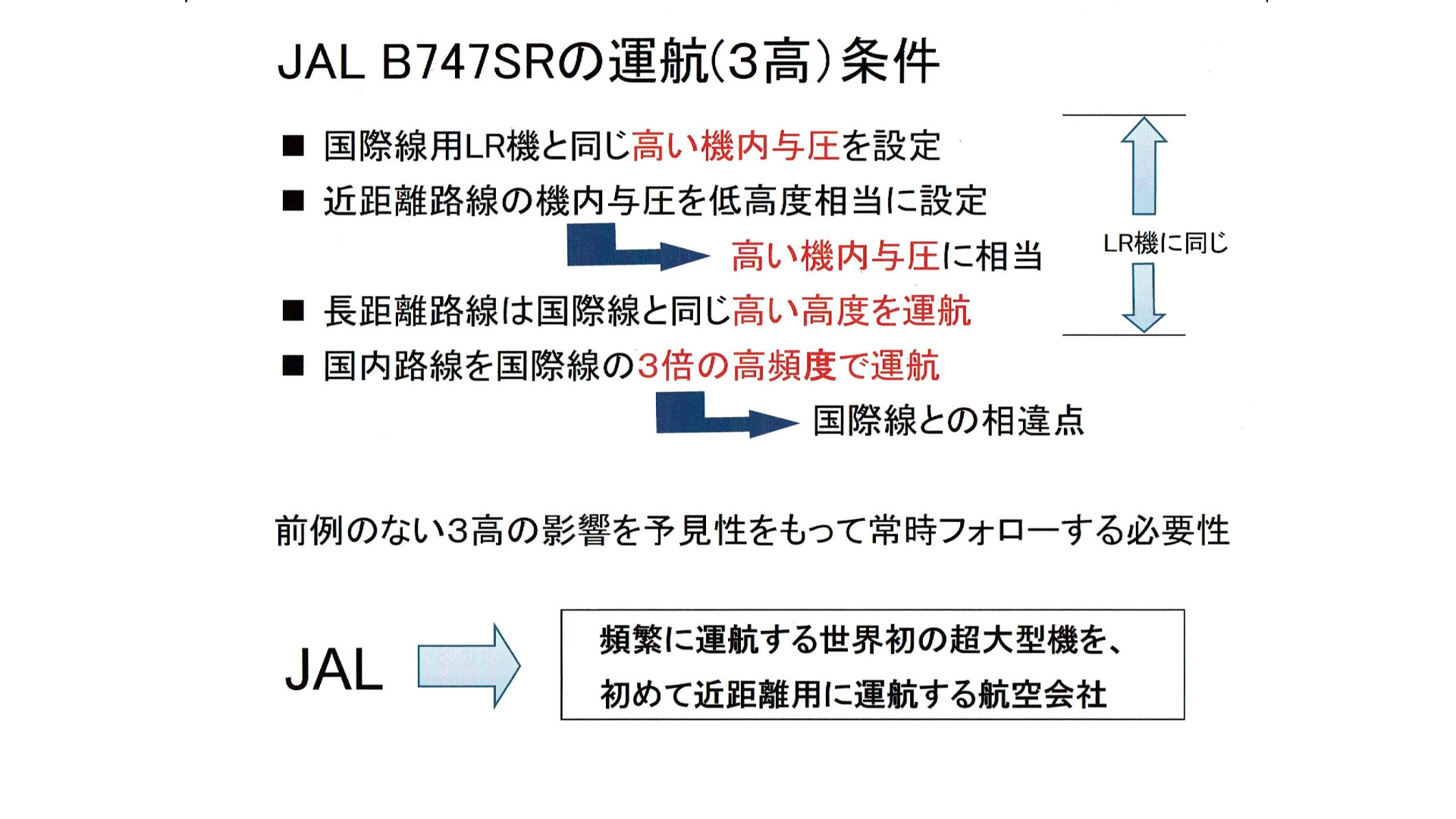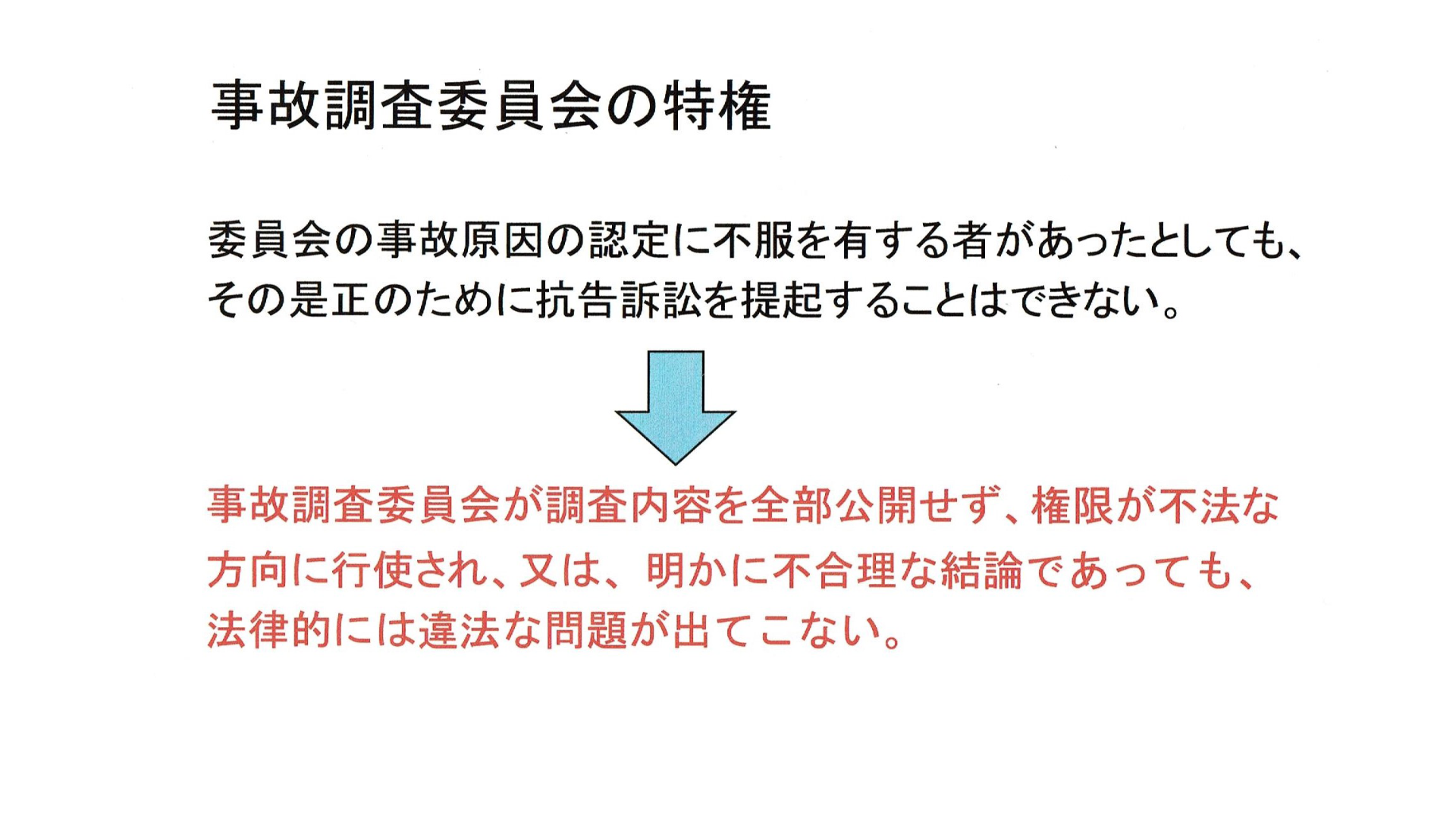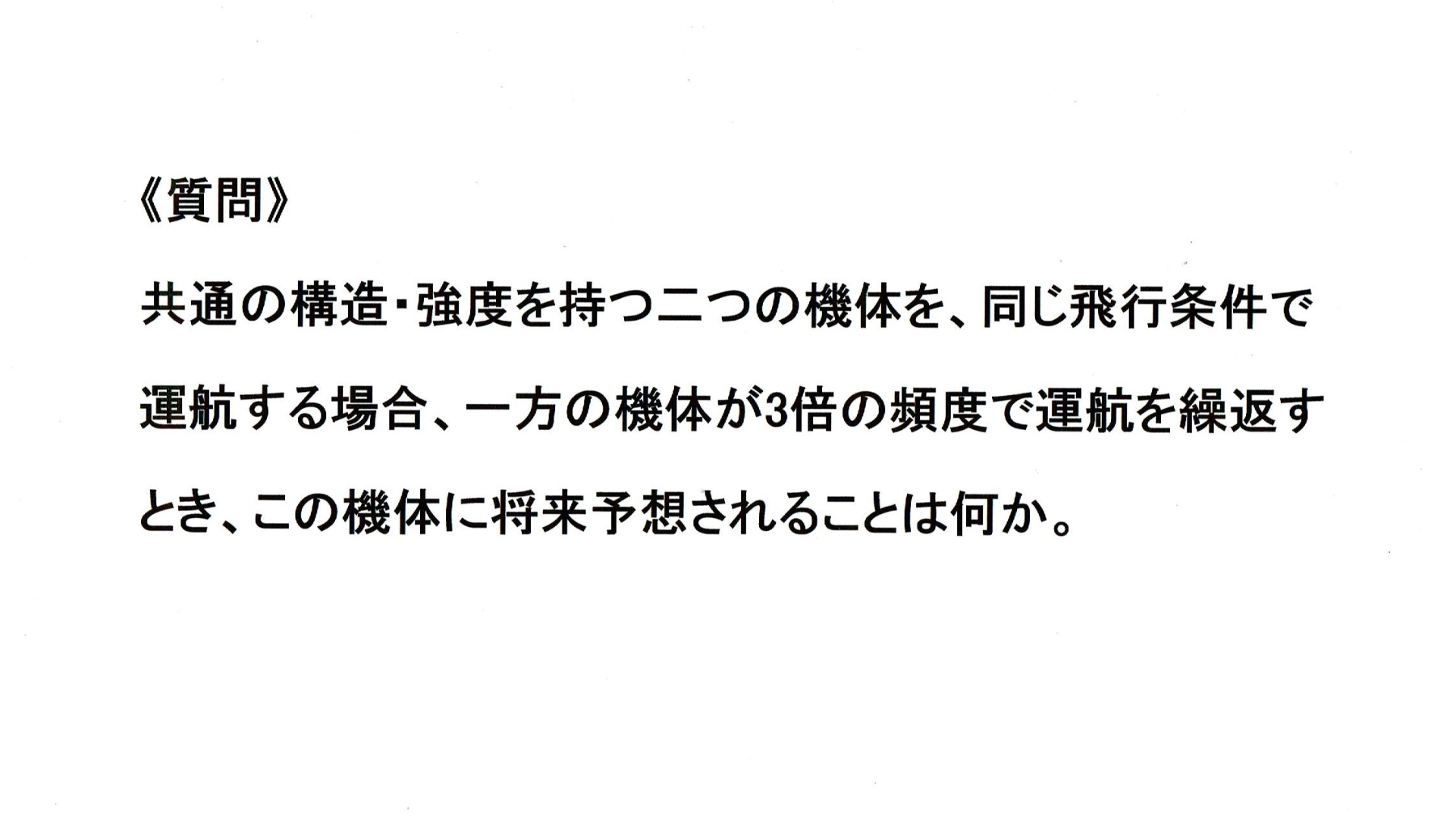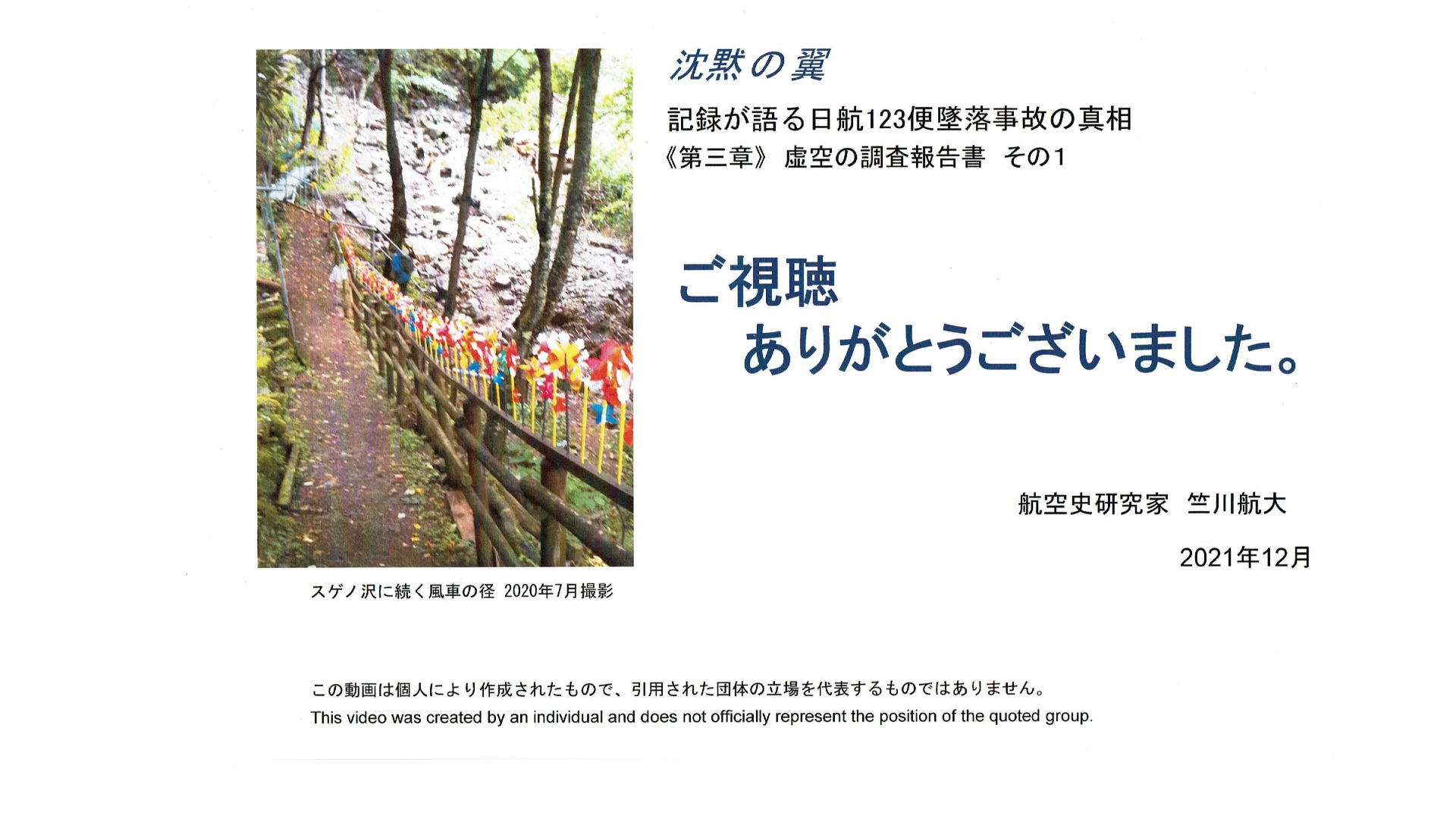Wings of Silence
Records tell the truth about the Japan Airlines Flight 123 crash
Chapter 3: Void investigation report - 1
"Wings of Silence" is the final chapter from here. I would like to thank all of you for your comments.
Last July, for the first time, I climbed Mt. Osutaka as a memorial service. There is a "Suge no Sawa no Sasayaki Monument" near the entrance to the approach. I was surprised to see this inscription. The investigation report was stated to have been issued after the approval of the NTSB Chairman.
I headed to the top of the mountain, imagining the investigator's feelings in compiling the investigation and report, and thinking of the external forces that controlled the independence of the Japanese accident investigation agency.
I am Takahiro Jikusen, an aviation history researcher.
Wings of silence, "The truth of the Japan Airlines Flight 123 crash that the record tells" has been clarifying the truth while showing objective evidence including original information in Chapter 1 and Chapter 2. Finally, the third chapter "Void Investigation Report," will be divided into two parts. This is the part 1.
In the explanation, as before, the crash aircraft is called JA8119 using the registration number, the B747 for international flights is called the LR aircraft, and the B747SR for domestic flights is called the SR aircraft.
Many pointed out that they disagree with the conclusion of the "Aircraft Accident Investigation Report" published by the Aircraft Accident Investigation Commission as the final report on June 19, 1987.
There was no disclosure of new facts in the "Commentary" issued in July 2011 even 26 years after the accident, and some important items in the investigation report that were "could not be clarified". There was no movement to make full use of the latest technology to clarify it.
If nothing is done, the unreasonable accident investigation contents will remain in the labyrinth and will eventually become established in the history of Japanese aviation.
Chapter 3, "Report of the Void," describes the current situation in which the accident investigation report is a vacant existence that deviates from the truth, and I would like to propose a re-investigation and a review and revision of the report.
On July 29, 2020, in the summer of the 35th year of the accident, I climbed Mt. Osutaka for the first time. This is to report to the victim the accident occurrence process.
Shortly after starting to walk along the approach, there is a "Sugenosawa Sasayaki Monument" next to the guide map box that many climbers pick up.
I don't know how many climbers are looking at the small letters on the metal plate description at their feet, but I was surprised to see the description.
The description is written like this. Let's read the main part.
Jim Barnett was the chairman of the NTSB at the time in August 1985. The NTSB dispatched four investigators to Japan to participate in the investigation on the ridge of Mt. Osutaka. The investigation report of the Aircraft Accidents Investigation Commission of the Ministry of Transport in Japan was published only after the draft was sent to NTSB and his approval was obtained.
The following 200 characters are omitted, but it states that "the draft of the investigation report was issued after obtaining the approval of the NTSB chairman."
I was surprised that the NTSB's approval was required prior to the publication of the survey results on the Japanese side. What was the independence of the Accident Investigation Commission?
At that time, it is clear that Japan's research ability, analysis technology, and experience were inferior to those of the United States, so it is unavoidable that the investigation proceeded with the advice of the United States.
However, if the US intention to approve the contents of the report issued by the Accident Investigation Commission had permeated, it would be unavoidable to doubt the objectivity of the report.
The report must be revised and amended if it is not true. In other words, the history of Japanese aviation must be rewritten correctly.
Here is a list of the conclusions and questions of the report shown in Chapter 1, Part 1.
I think of the fact that irrational content that deviated from the truth was summarized in the report, and the wisdom of the people involved in the preparation of the report as engineers, the conflict between pride and conscience. I was thinking about various things.
The accident investigation report has been carefully examined and is evaluated to be convincing in most cases.
However, it cannot be evaluated in part and in the core. I presume that the final conclusion was forced to make a painful judgment and work in the void.
Despite the fact that part of it is the key to elucidating the cause of the accident, the work of scientifically redressing the pre-concluded non-scientific events is not worthy of evaluation. I think it was the process of compiling the "Void Investigation Report".
I have come to have a unique view of this compilation process. I came to think that the "Void Investigation Report" was a sign thrown at the younger generation. I will explain it later in this volume.
The inscription I saw at the entrance to Mt. Osutaka gave me a boost and renewed my feeling that I could report my examination results toward the "Shoukon Memorial".
I named "Time Zero" at 6h 24m 35s on August 15 in 1985 when an abnormality occurred in JA8119 over Sagami Bay. The origin of the crash always exists somewhere from the manufacture of the aircraft to the time zero.
I would like to focus on events before time zero.
I take the position that we should consider and draw conclusions about data-based, scientifically accurate events. I feel that there are many irrational points in the accident investigation report from a scientific point of view.
While pointing out that the cause of the report is unreasonable, the reason we couldn't argue head-on was that we couldn't come up with a definitive alternative when asked what was the cause of what happened at time zero.
When the vertical stabilizer was damaged, there was an environmental change in the cabin due to an air leak.
It was not a sudden decompression, but a gradual decompression, and soon the air leak stopped, allowing people to stay conscious until the end.
Why did the air leak stop?
When I realized that the role of the marbles in the ramune bottle and the role of the pressure bulkhead were exactly the same, and the mechanism of stopping the air leak flashed, I could tell the truth of the accident consistently with many disjointed and dissonant events. I got convinced.
Investigating the cause is all about finding the reason why people kept their consciousness until the end, even though there was an air leak.
This figure shows a state in which an air leak leaks from the upper outer circumference of the pressure bulkhead to the non-pressurized part. However, due to the pressure inside, it will be closed immediately.
Maintaining consciousness means that the air pressure was maintained. The capacity of the air conditioner cannot compensate for the amount of air that flows out. Stopping the air leak means that the gap is blocked as shown in this figure.
Some of the metal bulkheads blown out of the pressure bulkhead cannot return to their original position and close the hole. The idea of tearing cannot explain the phenomenon that occurred in the field.
However, if the pressure bulkhead is a spherical marble, I noticed that the marble sticks to the inside of the bottle, and even if it takes once, it self-blocks and the gas leak stops completely.
Next is why SR aircraft and why JA8119.
List the technical facts including JAL data.
The B747SR is for domestic flights only, but it has the same structure and the same flight mode as international flights. That is,
SR aircraft operated three times as often as international flights
In-flight pressurization of SR aircraft is the same as for international flights. Pressurization of routes less than 1 hour is almost the same as the surface of the earth.
Flight altitude for routes over 1 hour is the same as for international flights.
High flight frequency, high pressurization, and high flight altitude were called "three highs of SR aircraft".
JA8119 had a tailstrike distortion in the upper half of the pressure bulkhead.
From a different point of view, we can see the failure from a completely different perspective
Due to layout of the main landing gear, the B747 causes large tire skidding when traveling on the ground. All skidding forces originated from the aerodynamics of the vertical stabilizer, which applied torsional stress to the rear of the fuselage.
Here, I would like to introduce the wear tendency of B747 tires.
The relationship between tire wear and failure is surprising, but if you imagine a huge eraser, you can imagine that the vertical stabilizer applied a large force to the upper part of the pressure bulkhead.
The wear difference of B747 is more than 50%, but it is about 10% at most in the model with one main wheel such as B737. The big difference is a tendency peculiar to B747.
The reason for this will be explained in Chapter 3, Part 2.
List the facts that occurred in the room. It is shown separately before and after time zero.
A man who boarded the flight just before JAL123 said, "I was worried about the eerie noises that I heard from the ceiling during the flight. It was already strange. JAL had the option of not flying to Osaka, preventing accidents. I was wondering if there was no such thing."
The second information.
The maintenance record of JA8119 recorded that 85% of all door opening / closing problems were concentrated in the last 4 toilets. It seems that the cause is the twist of the rear part of the aircraft in flight.
The 3rd. information.
The survivor at the rear of the JA8119 aircraft testified as follows.
Slight decompression、but no sudden decompression.
No difficulty when breathing.
Light fog occurred but disappeared after a few seconds
Temperature in the room never dropped.
There was a bang and the ceiling board broke, something like cloth was appeared.
The cloth is believed to have been a cover of insulation.
Testimony proves that no holes as large as 2 square meters are open in the pressure bulkhead. the survivor also testified that JA8119 maintained the in-flight environment. In reality, there was no sudden decompression.
It is possible to refute them scientifically.
There is a strict fact that people remained conscious until the end.
If the big hole opens as the report concludes, people must be unconscious.
The accident investigation report is a body of "Void Investigation Report" that is far from the actual situation.
The investigation report cites the discovery of insulation in the horizontal stabilizer as a strong evidence that the blow-off of the pressure bulkhead was the origin of the accident.
I think the insulation was sucked out even through a small gap.
What I would like to confirm by pulling up the vertical stabilizer of Sagami Bay is whether or not there is insulation inside the vertical stabilizer.
Based on Jikusen theory that the vertical stabilizer first broke and scattered, no insulation fibers were found inside the vertical stabilizer.
On the other hand, based on the theory of the Accident Investigation Commission, insulation fibers blown with air must be found in the vertical stabilizer as well as in the horizontal stabilizer.
Justifying an irrational scenario is a scientifically difficult task, so at this stage the Japan Transport Safety Board will not pull up the vertical stabilizer that sinks to the seabed and reveal the irrationality on its own. I think it will be.
The Japan Transport Safety Board should be best aware of the irrationality of reports and commentary, and the knowledgeable investigators may understand this situation.
So why did the report come to such an irrational conclusion?
As mentioned in Chapter 2, the accident analysis was led by the United States from the early stages. If the cause of the accident spreads to the entire 630 B747s around the world at that time, the impact would be immeasurable on a global scale.
The NTSB and Boeing joined the investigation team and immediately discovered a repair error in the pressure bulkhead at the site of Mt. Osutaka.
It looked like a good fact that could be limited to JA8119, which was the implementation of repairs.
However, I think that it was not possible to read at that time that the blow-off of the pressure bulkhead would cause inconsistency in the later story development.
The committee members, who expected it difficult to find scientific consistency, may have been disgusted by the one-sided US judgment and earlier announcements.
The Japanese Accident Investigation Commission, which was entrusted with the adjustment of inconsistencies, faced a difficult task.
I think there were several reasons why Boeing admitted his failure.
First of all, repair mistakes are an unavoidable fact, but the target is limited to JA8119 and it can be converged at an early stage.
Next is the high level of maintenance of JAL. At that time, JAL's "sighing and intense maintenance" was well known, and Boeing had the idea that JAL could not make any maintenance mistakes.
Third, JAL is the second largest customer after the U.S. military, and is expected to continue to be a major user in the future.
There is no doubt that Boeing's repair work mistakes were made, but I think the Boeing mistakes were that the entire pressure bulkhead was not replaced and that the cause was a blowout that originated from the repair part of the pressure bulkhead.
Based on the International Civil Aviation Convention, the parties to the accident investigation, that is, Japan, should have announced it, but it was reported early by the US newspaper.
Although the cause has been known globally, the cause has been unreasonable as mentioned above.
"Why did people stay conscious until the end?" The Accident Investigation Commission had to explain the decisive gap between the conclusions and the reality.
The Accident Investigation Committee was responsible for adding explanations for the inconsistencies, but Chairman Hatta resigned three months after taking office because of his illness.
My speculation is that the quitting of the committee was because he could foresee as an engineer that the conclusions of the US's hard-line research process would be inconsistent. I think the engineer's pride refused to prepare the report.
I think that the successor, Chairman Takeda, who took over the contradiction, was also a knowledgeable person. He also compiled the final report while understanding this process. There was an important remark from Chairman Takeda.
"The report is 70 points completed."
I think that what he managed to evaluate to the level of the point was that he understood the existence of the contradiction and left room for the younger generation to re-examine it with new facts. If it's 100 points, it's over.
Rather, the 70 points suggest that we expect a re-investigation and encourage it,
and I think it was the true intention of Chairman Takeda.
It was decided that the inconvenience could be endured for the time being with the privileges given to the Accident Investigation Commission, while satisfying the demands of the United States and keeping pride by keeping the deduction of 30 points under the supervision of the government. I think it's.
It's a hypothetical story, but if someone notice the same mechanism and failure sequence in the theory of Jikusen at the stage of accident analysis, the accident investigation committee, NTSB, and Boeing will all agree with the scientific consistency and various theories will be discussed. I don't think it caused the flooding of today's turmoil.
However, since "B747SR's 3rd High" is the basis of the Jikusen theory, Boeing, who admitted the mistake will not be able to escape responsibility, but in addition, I think that Japan Airlines' responsibility will be highlighted.
I would like to consider why Japan Airlines is responsible.
I have technical doubts about the suitability of the operating conditions set by JAL for operating SR aircraft, which has led to the promotion of breakdowns. In other words, I think that JAL also has a responsibility to bear.
JAL's responsibility was to be optimistic about the operating conditions that promote aircraft fatigue, without demonstrating expertise.
That's why I thought it was human error. Specifically, it is as follows.
I think that a comprehensive study of fatigue should have been done.
JAL should have considered SR aircraft as well, just as JAL thoroughly followed the first 10 aircraft when the B747 was introduced.
The point is that JAL should have followed the world's first frequently operated super-large aircraft with the utmost care as the world's first airline to operate short-haul routes.
I was stationed in the United States in the mid-1990s, ten years after the Osutaka accident. At that time, I often had the opportunity to visit Boeing in Seattle.
Many of the engineers I had a close relationship with were aware of the accident on Flight JAL123, but none of them commented on the cause of the accident and made sure that they did not speak.
The Accident Investigation Commission also did not respond to the repeated requests of the bereaved family. After 26 years, the committee has finally published a "manual".
At the beginning of the manual, there is a statement that "it does not add new analysis or estimation of the cause to the Aircraft Accident Investigation Report."
If we could make full use of the new analysis technology, we could expect to discover new facts, but I was disappointed by the lack of willingness to solve the problems of the Japan Transport Safety Board.
I do not feel the desire of the former chairman at that time to further consider and improve aviation safety based on the report.
Is Transport Safety Board going to leave -30 points as it is?
Although the Accident Investigation Commission is privileged, I wonder what it would be like to leave the situation where doubts have been raised regarding the worst accident report in history.
Is it okay to rely on the privileges of the Accident Investigation Commission forever?
The privilege of the Accident Investigation Commission is that even a person who is dissatisfied with the Commission's determination of the cause of an accident cannot file an appeal to correct it.
Therefore, even if the Accident Investigation Commission does not disclose all the investigation contents, the authority is exercised in an illegal direction, or the conclusion is clearly unreasonable, no legally illegal problem will arise. about it.
The law defends the status, including contradictions.
It is natural to take care not to file an appeal against the individual investigators at that time, but the only way to find out the official truth is to raise new facts and urge the organization to re-investigate.
In response to the request of the bereaved family in the UA B747 crash, debris was pulled up from the deep sea floor and re-investigation was conducted, the initial conclusions were revised, and the report was reissued.
I would like to expect the Japan Transport Safety Board to be brave.
The current accident investigation report is in the state of "Void investigation report" in which the suspicious core part has been repainted with the correct one. Through objective data I am convinced that way.
At the end of Chapter 3, Part 1, I would like to ask you once again.
If two aircraft with the same structure and strength are operated under the same flight conditions, what is expected of this aircraft in the future when one aircraft repeats operation three times more frequently?
What if this aircraft had an inadequately treated old wound? I am convinced that everyone will come to a consensus conclusion.
This is the end of Chapter 3, "Void Investigation Report".
In the next final episode, Chapter 3, Part 2, I will complete the whole story by telling the technical aspects of the questions I have received.
Thank you for watching today.
This was reported by Takahiro Jikusen, an aviation history researcher. See you next time in Chapter 3, Part 2.

